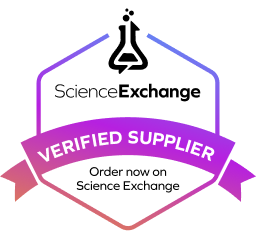
Hey there! I’m Eric Feddal, the Head of Growth at Ingedata. I I work on the frontline of enterprise GenAI transformation, and a troubling pattern is emerging. Too many organizations are limiting their AI ambitions, focusing on making small, often obsolete models perform basic, isolated tasks. This approach isn’t transformation; it’s incrementalism.
At Ingedata, we understand the risks and architectural complexities of scaling agentic AI, which means autonomous systems capable of making decisions independently. But we also see the huge potential for companies ready to move boldly, quickly, and deeply into AI transformation.

The real challenge is not the technology. It is the imagination behind how AI is applied. Most leaders still struggle to picture how their core processes would change if autonomous agents handled 60 percent of the work. This is not about copilots or improved search tools; it is about Real, end-to-end transformation.
To understand the gap between small tools and true reinvention, we need to look at how AI is actually built. In a recent discussion, Wharton Professor Ethan Mollick highlighted a critical, often-overlooked truth: AI is not magic. It’s built on a foundation of massive human labor dedicated to creating and annotating high-quality data.
This “human-in-the-loop” approach is the engine of AI transformation. But the quality of that engine determines everything. Before an AI agent can autonomously reason across legal contracts or dynamically create sales proposals, the data it learns from must be flawless.
This is where the tool-making approach falls short. It often relies on disconnected, low-context data work. At Ingedata, we see things differently. Our foundation is built on providing the expert human teams necessary to ensure data quality from the start. We don’t just process data; we create the reliable foundation for transformative AI.

This is proven in our work in the most demanding sectors:
What sets Ingedata apart? Our stable, highly skilled workforce maintains a staff turnover rate of less than 3%—ensuring consistency and expertise that volatile gig-worker models simply cannot match. This stability translates directly into superior data quality and client outcomes.
Once you have this foundation of data quality, you can start asking the bigger questions that drive real transformation:
That’s the paradigm shift we’re enabling today at Ingedata—with real agents in real processes, not just pilots or proof-of-concepts.
The real debate is not small versus large AI models. It is about moving beyond tool-based thinking to reinvent how work happens.
So, what’s your take? Are you building AI tools just to save time? Or are you ready to rethink the very shape of work?
This conversation is critical for transformation leaders. If you’re thinking about making 2025 the year you go beyond copilots and build a truly intelligent operation, let’s connect.
The debate shouldn’t be small models vs. big models. It’s tool thinking vs. operating model reinvention.
At Ingedata, we believe true transformation requires three critical elements:
So, what’s your take? Are you building AI tools just to save time? Or are you ready to rethink the very shape of work itself?
This conversation is critical for transformation leaders. If you’re thinking about making 2025 the year you go beyond copilots and build a truly intelligent operation, the foundation starts with data quality, expert human insight, and the vision to reimagine your core processes.
The question isn’t whether AI will transform business—it’s whether you’ll lead that transformation or be left behind by it.
At Ingedata, we’re not just service providers—we’re transformation partners. We bring the expertise, stability, and vision needed to turn AI potential into business reality.
Ready to transform your business with AI that actually works?
Connect with our team to explore how Ingedata’s expert human-in-the-loop processes can power your next-generation AI initiatives.
#AI #GenAI #EnterpriseAI #AITransformation #DataQuality #FutureOfWork #AIAgents #MachineLearning #BusinessInnovation #TechLeadership





Proudly awarded as an official contributor to the reforestation project in Madagascar
(Bôndy - 2024)